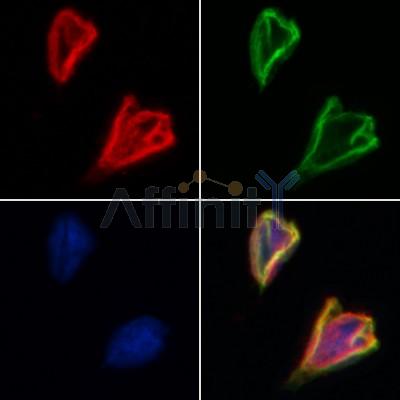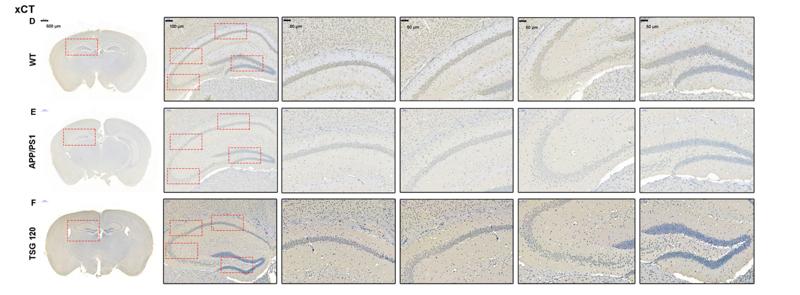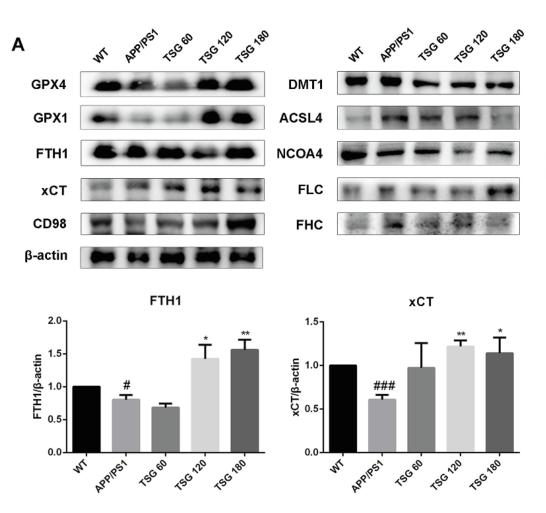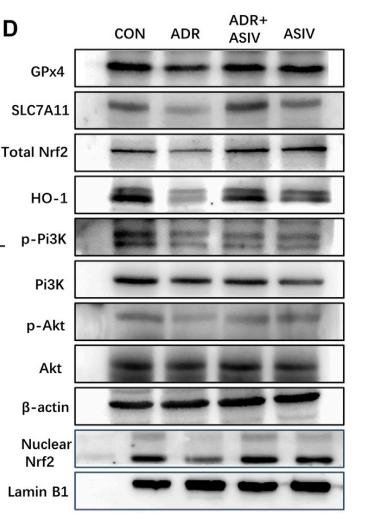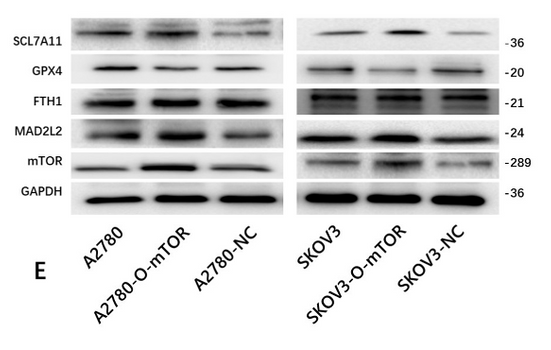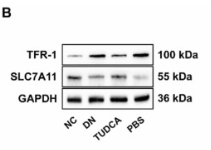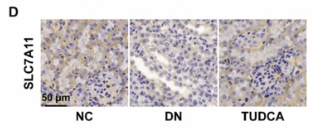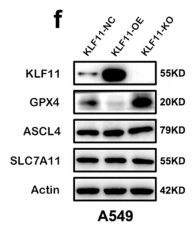xCT Antibody - #DF12509
| Product: | xCT Antibody |
| Catalog: | DF12509 |
| Description: | Rabbit polyclonal antibody to xCT |
| Application: | WB IHC IF/ICC |
| Cited expt.: | WB, IHC, IF/ICC |
| Reactivity: | Human, Mouse, Rat, Monkey |
| Prediction: | Pig, Horse, Rabbit, Dog |
| Mol.Wt.: | 37 kDa; 55kD(Calculated). |
| Uniprot: | Q9UPY5 |
| RRID: | AB_2845314 |
Related Downloads
Protocols
Product Info
*The optimal dilutions should be determined by the end user. For optimal experimental results, antibody reuse is not recommended.
*Tips:
WB: For western blot detection of denatured protein samples. IHC: For immunohistochemical detection of paraffin sections (IHC-p) or frozen sections (IHC-f) of tissue samples. IF/ICC: For immunofluorescence detection of cell samples. ELISA(peptide): For ELISA detection of antigenic peptide.
Cite Format: Affinity Biosciences Cat# DF12509, RRID:AB_2845314.
Fold/Unfold
Amino acid transport system xc xCT antibody; Amino acid transport system xc-; Calcium channel blocker resistance protein CCBR1; Calcium channel blocker resistance protein CCBR1 antibody; CCBR1; Cysteine/glutamate transporter antibody; Cystine/glutamate transporter; OTTHUMP00000164578; SLC7A11; Solute carrier family 7 (anionic amino acid transporter light chain, xc- system), member 11; solute carrier family 7; Solute carrier family 7 member 11; Solute carrier family 7, (cationic amino acid transporter, y+ system) member 11; SYSTEM Xc(-) TRANSPORTER-RELATED PROTEIN; xCT; XCT_HUMAN;
Immunogens
A synthesized peptide derived from human xCT, corresponding to a region within the internal amino acids.
- Q9UPY5 XCT_HUMAN:
- Protein BLAST With
- NCBI/
- ExPASy/
- Uniprot
MVRKPVVSTISKGGYLQGNVNGRLPSLGNKEPPGQEKVQLKRKVTLLRGVSIIIGTIIGAGIFISPKGVLQNTGSVGMSLTIWTVCGVLSLFGALSYAELGTTIKKSGGHYTYILEVFGPLPAFVRVWVELLIIRPAATAVISLAFGRYILEPFFIQCEIPELAIKLITAVGITVVMVLNSMSVSWSARIQIFLTFCKLTAILIIIVPGVMQLIKGQTQNFKDAFSGRDSSITRLPLAFYYGMYAYAGWFYLNFVTEEVENPEKTIPLAICISMAIVTIGYVLTNVAYFTTINAEELLLSNAVAVTFSERLLGNFSLAVPIFVALSCFGSMNGGVFAVSRLFYVASREGHLPEILSMIHVRKHTPLPAVIVLHPLTMIMLFSGDLDSLLNFLSFARWLFIGLAVAGLIYLRYKCPDMHRPFKVPLFIPALFSFTCLFMVALSLYSDPFSTGIGFVITLTGVPAYYLFIIWDKKPRWFRIMSEKITRTLQIILEVVPEEDKL
Predictions
Score>80(red) has high confidence and is suggested to be used for WB detection. *The prediction model is mainly based on the alignment of immunogen sequences, the results are for reference only, not as the basis of quality assurance.
High(score>80) Medium(80>score>50) Low(score<50) No confidence
Research Backgrounds
Sodium-independent, high-affinity exchange of anionic amino acids with high specificity for anionic form of cystine and glutamate.
Membrane>Multi-pass membrane protein.
Belongs to the amino acid-polyamine-organocation (APC) superfamily. L-type amino acid transporter (LAT) (TC 2.A.3.8) family.
Research Fields
· Cellular Processes > Cell growth and death > Ferroptosis. (View pathway)
References
Application: WB Species: Mouse Sample: GC-2 cells
Application: IF/ICC Species: Mouse Sample: GC-2 cells
Restrictive clause
Affinity Biosciences tests all products strictly. Citations are provided as a resource for additional applications that have not been validated by Affinity Biosciences. Please choose the appropriate format for each application and consult Materials and Methods sections for additional details about the use of any product in these publications.
For Research Use Only.
Not for use in diagnostic or therapeutic procedures. Not for resale. Not for distribution without written consent. Affinity Biosciences will not be held responsible for patent infringement or other violations that may occur with the use of our products. Affinity Biosciences, Affinity Biosciences Logo and all other trademarks are the property of Affinity Biosciences LTD.







